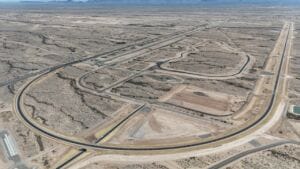Arizona’s economy is recovering at a much faster pace than predicted at the height of COVID-19.
While there are potential setbacks on the horizon, the economic outlook ahead looks surprisingly bright, state and national economists and budget analysts said Thursday at the annual conference of the nonprofit Arizona Tax Research Association (ATRA).
“Since the pandemic began, in general, revenue collections have just been much higher than we’ve anticipated. The lows weren’t as low as we thought they would be in the spring, and now revenues are growing more quickly than we anticipated,” said Richard Stavneak, director of the state’s Joint Legislative Budget Committee, that provides recommendations to the Legislature regarding the state budget and future fiscal needs.
Dark clouds forming
There are a few dark clouds on the horizon that could reverse any rosy projections. As COVID-19 cases are rising here and across the nation, a long term spike in infections could result in widespread shutdowns. Last week, the positivity rate in Arizona had edged back up to 11 percent.
Congress also has failed to agree on a new stimulus package, or how to spend hundreds of millions of dollars allocated but sitting unused, conference speakers said. But there’s confidence they will come up with some form of relief.
Conference brings government, industry, taxpayers together
ATRA, the state’s 80-year-old “taxpayer watchdog,” holds the annual conference each year to help prepare taxpayers, business owners and policymakers for upcoming challenges in state and local tax and public finance.
This year’s virtual event saw the largest turnout in the organization’s 80-year history and included 23 state legislators in attendance, said Kevin McCarthy, president of ATRA.
A slate of speakers touched on the state budget, key local, state and national tax issues, economic forecasts, and a 2020 election “post mortem.” Governor Doug Ducey made a few statements, calling on Arizonans to remain diligent in fighting the spread of COVID-19 to end deaths and keep the economy safe.
Here are some of the key takeaways from the conference.
Surprising revenue trends for state budget
Stavneak talked about the state budget and what’s ahead. Projections made a few months ago that anticipated a serious shortfall for 2021 will likely be recalculated at much higher levels when JLBC releases its projections in January, he said.
Some surprising revenue trends coming out of the pandemic pushed budget revenue projections higher than expected, Stavneak said.
Those included a spike in personal income shooting up to 11 percent in the fourth quarter of this fiscal year, which was fueled by more than $38 billion pouring into the state in federal stimulus funds.
Even without the federal stimulus, personal income is only down about 1 percent, he said.
Spending also is up for durable goods, retail, autos and building supplies. Sales tax from the new “Wayfair” legislation signed by Gov. Ducey last year is generating more revenues, too, especially with more people buying online during the pandemic. The legislation that went into effect in October 2019 requires online, or remote, sellers and marketplace facilitators to file and pay transaction privilege tax.
Arizona performing better than nation
An infusion of $38 billion in federal coronavirus aid was a major factor in pushing up the state’s economy. A very healthy pre-pandemic economy and the state’s and $1 billion rainy day fund, also have helped prop up the economy during the pandemic.
Economic forecast bright for next few years
Current trends indicate Arizona will head into full economic recovery by the end of 2021 or in 2022, returning to 4 and 5 percent GDP growth in 2023 and 2024.
Arizona should fare better than the rest of the nation, economist Jim Rounds said. While the state’s GDP was down 25.3 percent in the second quarter of this year, the nation saw a 31.4 percent drop, he said.
Some fallout could be addressed with wise tax policies
Moving forward, certain issues will still need to be addressed including the fallout from Proposition 208, said Kevin McCarthy, president of ATRA.
The proposition almost doubled the income tax on Arizona’s wealthiest citizens and tens of thousands of businesses. These are small businesses with 500 or fewer employees who file under the individual tax code as pass-through entities, such as sole-proprietorships, partnerships, LLCs, and S corporations.
McCarthy cited estimates that the proposition could result in the loss of 124,000 jobs and $2.4 billion in tax revenue over the next decade. New business locations to the state are estimated to drop by 15 percent.
ATRA will be advocating for state legislation to ease the pain, including measures to create more tax equity among the state’s different tax classifications.
Public policy important to sustain economic revival
State lawmakers will need to closely examine ways to bolster those most in need and implement tax saving programs such as criminal justice reform and extension of executive orders to help weather the pandemic’s effect, said economist Rounds.
A number of sectors will continue to deal with financial strain including health and social services, arts and entertainment, and mining. Low-income and service workers, the majority from the hard-hit restaurant, hospitality and tourism sectors, will need unemployment and other assistance to survive, Rounds said. Housing affordability is another issue that needs to be looked at.
An end in sight
On a positive ending note, signs of a successful vaccine coming in 2020 will signal the end of the coronavirus downturns, Rounds said. Once Arizona regains its footing, the economy should soar.
“The recession ends the month the vaccine is widely distributed,” he said.
To read more about ATRA and its work on behalf of taxpayers, go to: Arizona Tax Research Association.
This story was originally published at Chamber Business News.




